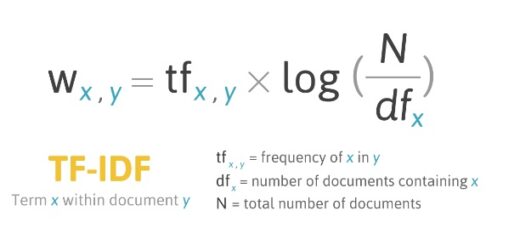Descriptive Predictive and Prescriptive Analytics
Descriptive Predictive and Prescriptive Analytics, being able to adopt a systematic approach to analytics is one of the most crucial competencies to develop in any significant company.
Making the right judgments is difficult for business people, especially when there is a lack of data to guide them.
Furthermore, because past experiences aren’t always accurate predictors of future results, decisions based solely on historical facts may be erroneous at times.
Boosting in Machine Learning-Complete Guide » finnstats
However, there are approaches, technology, and tools that can assist businesses to accomplish this.
By accumulating and analyzing previous data, predictive analytics has become a popular method of predicting future outcomes.
Descriptive Predictive and Prescriptive Analytics
Predictive analytics is frequently referred to be data analytics “proactive component.”
Subscribe to our newsletter!
However, prescriptive analytics is another way that firms are incorporating into their decision-making process.
Prescriptive analytics provides particular implementation alternatives, which are then compared against criteria to determine which are the most suited to implement.
It has the ability to create recommendations or insights that will assist company executives in making better, faster decisions in order to maximize the value of their data.
Logistic Regression R- Tutorial » Detailed Overview » finnstats
What is Prescriptive Analytics, and how does it work?
It’s a branch of business analytics (BA) that focuses on identifying the optimum course of action in a given set of conditions or opportunities.
Prescriptive analytics can also show you how to maximize a future opportunity or minimize a future threat, as well as the consequences of each option.
Definition of Prescriptive Analytics
Prescriptive analytics is a type of analytics that aims to tell you “what should be done, or what can be done” based on your data. Prescriptive analytics is based on the idea of considering the business impact on numerous areas.
Prescriptive analytics is a type of artificial intelligence that uses advanced mathematical models and algorithms to deliver an automated answer to a problem.
Random Forest in R » Complete Tutorial » finnstats
Descriptive Predictive and Prescriptive Analytics: What’s the Difference?
Prescriptive analytics differs from typical predictive analytics in that the former instructs you on how to make adjustments.
Predictive analytics, by its very nature, predicts what will happen but does not provide advice on how to act so that a company may take control of these “future” occurrences.
Traditional predictive analytics entails using data-driven models and algorithms to create a model that predicts or infers what will happen in the future based on historical data.
The model’s output, on the other hand, is a sequence of predictions or conclusions about what will happen in the future, rather than data.
How to Calculate Jaccard Similarity in R » finnstats
Prescriptive analytics, on the other hand, aids in the selection of the most profitable option.
Natural language processing, clustering, classification, decision trees, neural networks, fuzzy logic, Bayesian networks, rule-based analytics, and so on can all be used in the decision-making process.
While predicting the future may be an issue, this is not the primary goal of prescriptive analytics; this is best left to predictive analytics, especially in areas where high accuracy is required.
If you working in a business that makes automatic car parts, for example, predictive analytics can help you lower the likelihood of accidents.
To forecast future events, predictive analytics uses previous data. Customers’ behavior, product demand, and financial performance are all forecasted using this strategy.
Prescriptive analytics is primarily concerned with “how to?” rather than “what if?”
While predictive analytics can be thought of as determining the outcome of a projection, it is still about attaining a goal.
Prescriptive analytics, on the other hand, isn’t concerned with the outcome; instead, it focuses on what should happen and how to get there.
While predictive analytics and prescriptive analytics may appear to be interchangeable, they are not.
Predictive analytics aids in the development of a new decision, whereas prescriptive analytics aids in the development of an existing decision there’s still a lot of overlap between the two, but we’ll get to that later.
To distinguish between predictive and prescriptive models, consider the following example: You’ll need a predictive model to figure out what clients are likely to buy.
However, you’ll need prescriptive models to figure out which communication channel is ideal, or how many emails you should send to maximize the likelihood of a sale.
AIC in R (AIC Vs BIC) » finnstats
What Is The Role Of Prescriptive Analytics In Business?
First, based on current patterns and historical data, the organization should comprehend what is going on in its industry.
Prescriptive analytics can be utilized to transform the business for the better based on these inputs.
Prescriptive analytics should be used by any firm that uses predictive analytics to find opportunities, mitigate risks, and improve business performance.
Businesses can use prescriptive analytics to go beyond just trying to predict what will happen in the future by using analytical models and algorithms to make judgments and suggestions.
Prescriptive analytics evaluates data to determine its influence on the business and then prescribes the best course of action for improvement.
Sample Size Calculation Formula » Sampling Methods » finnstats
Prescriptive Analytics Types
The three primary subtypes of prescriptive analytics are as follows:
1. Operational Prescriptive Analytics (OPA) is a type of predictive analytics that is commonly employed in commercial contexts. Because it is best suited to business-driven decision-making, this sort of prescriptive analytics is the most popular.
2. Financial Prescriptive Analytics – Financial Prescriptive Analytics is frequently used in conjunction with Operational Prescriptive Analytics.
3. Strategic/prospective Prescriptive Analytics — This sort of prescriptive analytics is most commonly utilized in situations when business strategies are created and implemented with a clear understanding of short-term objectives.
How to Split data into train and test in R » finnstats
The accuracy of predictive analytics is based on the quality of historical data, as we said before in this piece. The forecast could be harmed if the latter’s quality is low or hazy.
Predictive analytics is also useful when sample sizes are small and the population is poorly characterized. This strategy can be used to forecast future occurrences in fields such as economics, information technology, and human resources.
The majority of existing predictive analytics techniques are founded on the assumption that the various variables in your data collection have some form of an underlying causal link.
When two or more independent variables are measured in a process, and you wish to utilize these variables to predict a result that is reliant on these independent variables, these techniques are generally used.
When you want to know what will happen to the dependent variable (the outcome) if the independent variables change, you can use this type of modeling.
Random Number Generator in R » finnstats
On the other hand, predictive analytics does not foresee the future. Only the cause-and-effect relationship between the variables of interest may be described.
It’s used to figure out what activities can be made to influence the outcome. The output isn’t a forecast of what might happen, but rather what should happen in order to get the intended results.
Prescriptive Analytics Requires Specific Tools
High-level programming languages, integrated ERP systems, and solution-specific software packages are all examples of prescriptive analytics tools.
SAS, Excel, SQL, Visual Basic, Visual C++, Visual Basic for Applications (VBA), and others are among them.
Prescriptive analytics is incorporated into the majority of these systems, while some may require extra programming.
SAS is the most widely utilized of these pre-built data analysis toolkits. The toolbox comprises prescriptive analytics operations and analytical tools like scatter plots, ratio analysis, and linear regression.
aggregate Function in R- A powerful tool for data frames » finnstats
Prescriptive analytics capabilities are also available in tools that may be incorporated into specific enterprise applications like SAP and Oracle.
Custom tools are designed to meet the user’s individual requirements. Many of these programs are freeware or have shareware versions that don’t require a license to use.
Network flows, graphical user interfaces for data processing, and visualization tools like Excel are examples of these tools.
Operating systems: Different operating systems have been built with features expressly designed to aid with prescriptive analytics, in addition to the numerous prescriptive analytics platforms.
Microsoft SQL Server, Red Hat Enterprise Linux, and IBM AIX, for example, are three systems designed to make prescriptive analytics easier to adopt by providing quicker processing speeds and more robust memory capabilities.
Linear optimization using R » Optimal Solution » finnstats
Conclusion
Large firms can use predictive analytics to make judgments based on previous data. Predictive analytics and prescriptive analytics work together to help businesses make better decisions and control risk.




